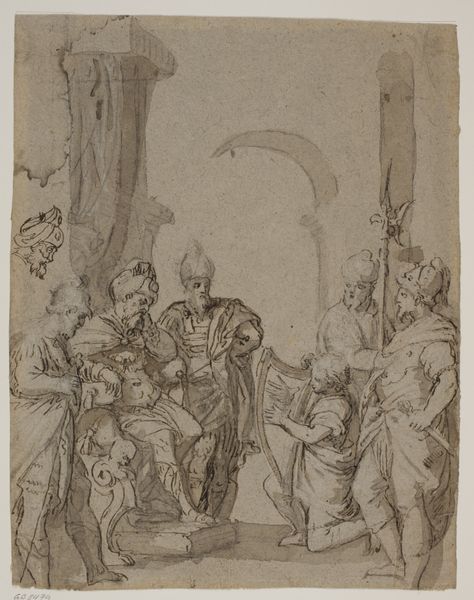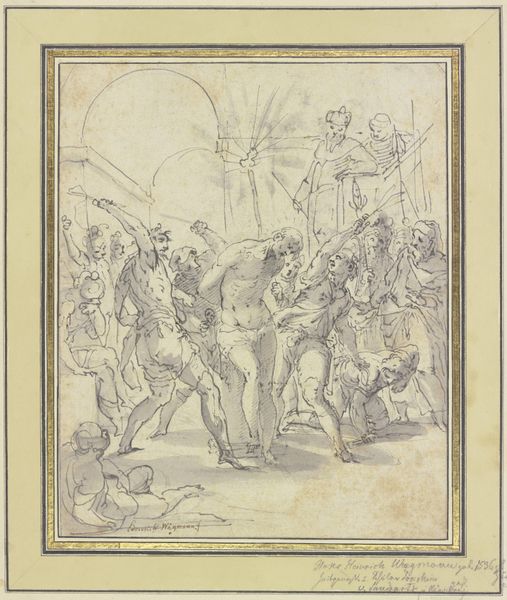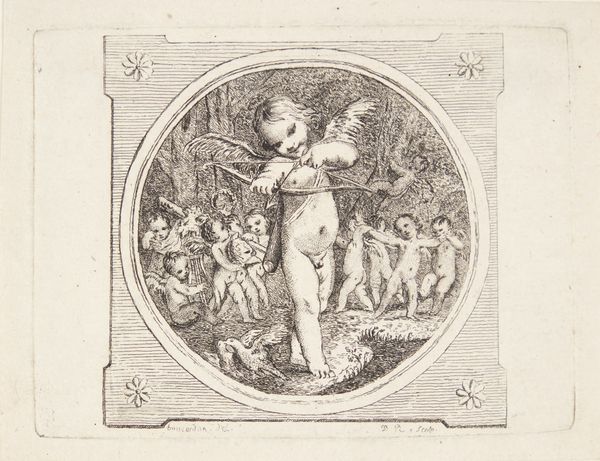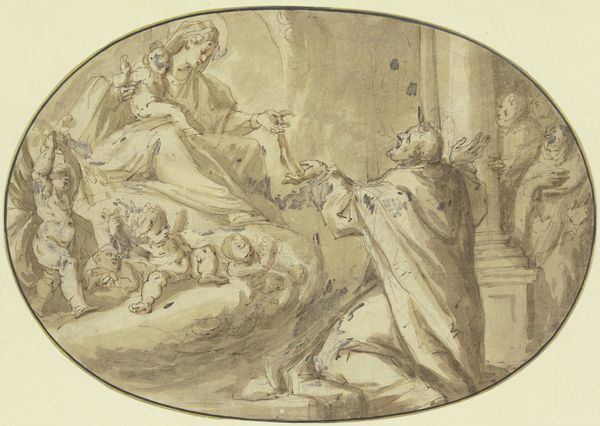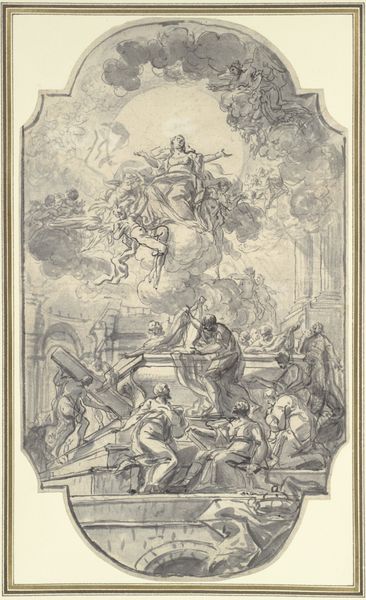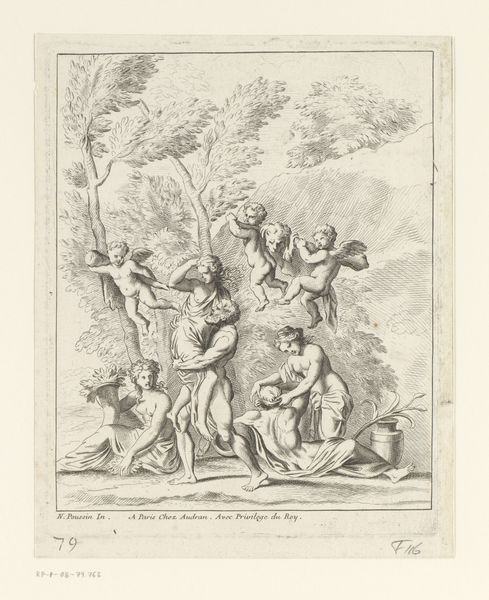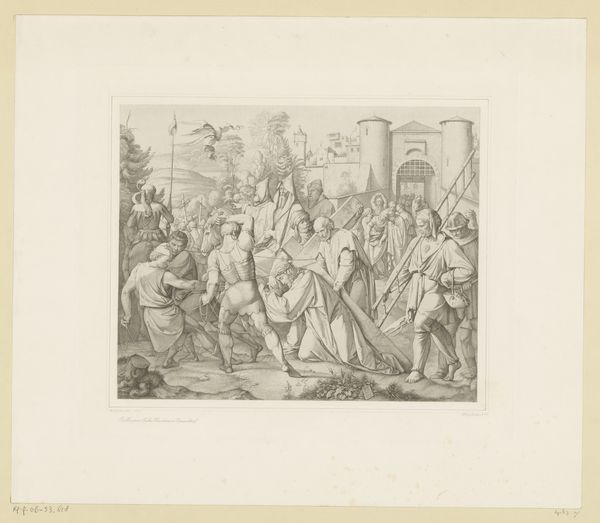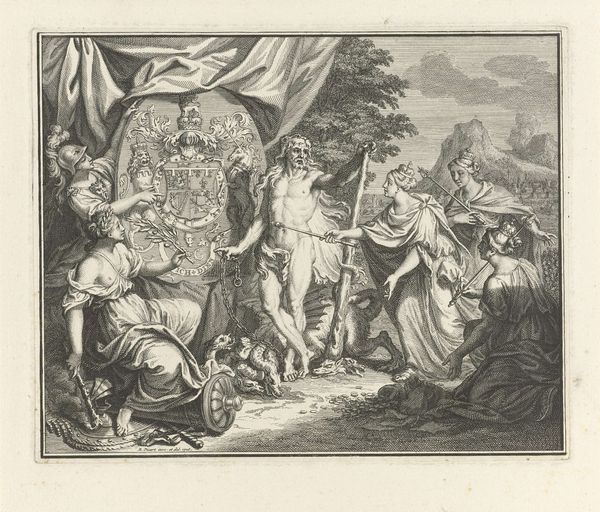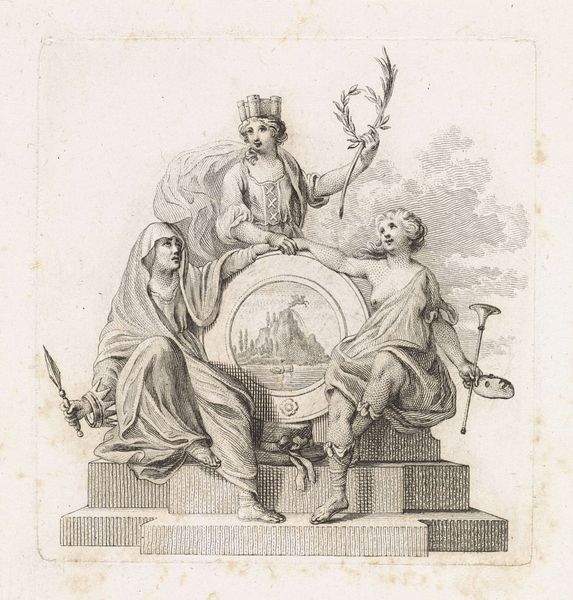
drawing, paper, pencil
#
portrait
#
drawing
#
allegory
#
landscape
#
paper
#
11_renaissance
#
pencil drawing
#
pencil
#
history-painting
Copyright: Public Domain
Pieter Coecke van Aelst made this drawing, Ausritt zur Jagd (Allegorie des Stolzes), in the 16th century with pen and brown ink and wash on paper. The material itself, humble paper, belies the aristocratic subject: a hunting party, replete with allegorical figures. The artist's pen work, with its fine hatching and cross-hatching, defines the forms, giving them volume and depth, while the brown wash adds a tonal richness, emphasizing the play of light and shadow. The whole image feels carefully rendered, emphasizing the labor and artistic skill involved in its creation. Consider that in the 1500s, paper itself would have been a valuable commodity, and the level of skill necessary to create this drawing would have been the result of years of training, supported by a wealthy patron. Van Aelst may have originally designed this work for a tapestry, a painstaking and laborious process for weavers, in a luxury trade serving only the wealthiest of society. Understanding the materials, making, and context of this work invites us to consider the social and economic conditions that enabled its creation, blurring the lines between fine art and the skilled crafts.
Comments
No comments
Be the first to comment and join the conversation on the ultimate creative platform.

